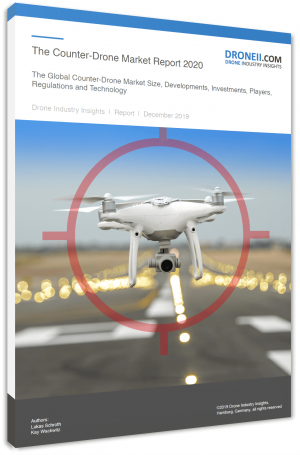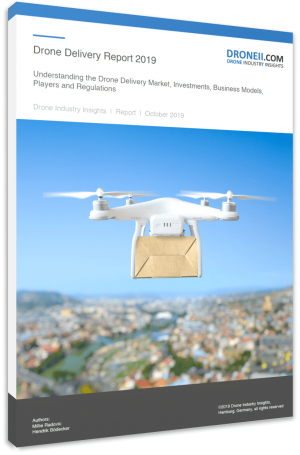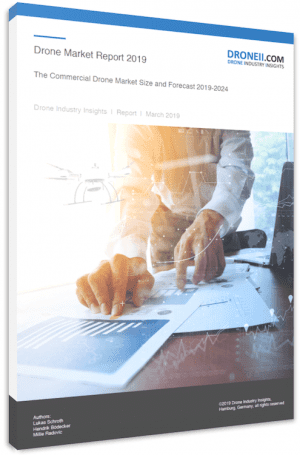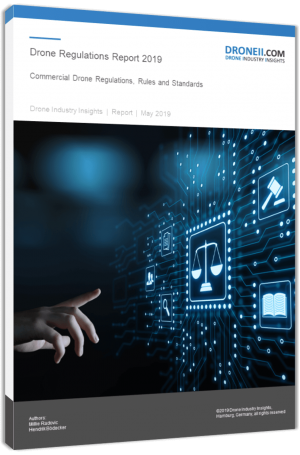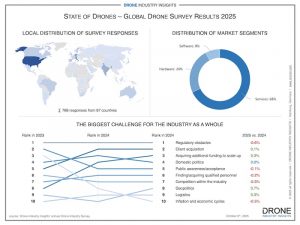30 min read · Created: 2020-05-11 · By Millie Radovic
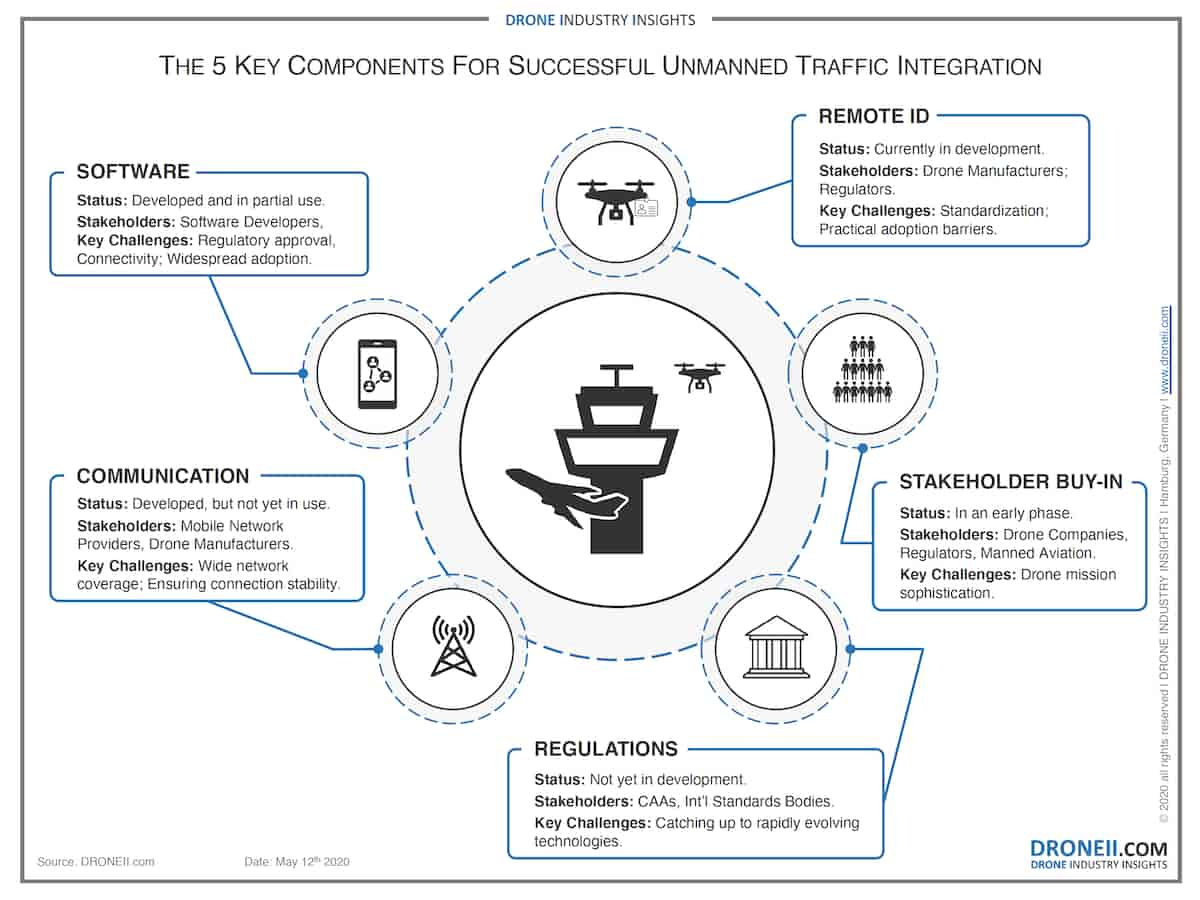

Unmanned Traffic Management Components: What Do We Need for a UTM Future?
Unmanned Traffic Management, or UTM for short, has been the talk of the drone industry for the past couple of years. It refers to any systems, products and programs which comprise efforts to create an air traffic management (ATM) system for drones. Such a system is needed because the huge amount of additional drone traffic cannot be managed by the current air traffic control (ATC) facilities.
Therefore, private enterprises and national aviation authorities have set out to establish new infrastructure to fulfil this role. The first and most important step to achieving airspace integration is to establish a UTM system which will enable seamless BVLOS drone operations at low altitudes (i.e. under 400 feet above ground in airspace where manned aviation’s air traffic services are not provided).
However, as governments work to create regulatory frameworks and pilot projects, and private companies develop software to support such systems, the phrase ‘UTM’ is frequently getting muddled. For this reason, this article sets out to outline all of the key ‘components’ of UTM, or in other words what needs to be in place in order for an effective unmanned traffic management system to be established. As things stand, there are five key components of an UTM future: software, infrastructure to support the drone’s communications, a regulatory framework for operations within the UTM system and for the UTM system itself, a remote identification system, and stakeholder buy-in.
UTM Software
Unlike traditional ATM which involves human operators keeping our skies safe with the help of radar technology, unmanned traffic management is entirely software-based without a human in the loop. UTM software is designed to support drone operations by providing a platform which can perform several tasks. It sets out to track all the drones that are in the air in real time as well as show non-restricted and restricted airspaces to help pilots avoid flying into areas that are forbidden. If used by official authorities, manned traffic management entities and drone operators, such a platform can not only help the pilot in flight planning, but also help the national aviation authorities in maintaining safe lower skies and prevent any collision between manned and unmanned aircraft.
There is a growing number of companies offering UTM software, AirMap, Unifly and Altitude Angel to name a few early players. Whereas some drone service providers (DSPs), such as Wing and Zipline, have even created their own software.
Communication
In order for UTM software to effectively fulfil its goal, drones’ ability to communicate with the ground is crucial. Effective drone communication is already vital in all operations in order to ensure that operators have undisrupted control over the drone. This is especially important if the drone is performing BVLOS flights. It is also crucial in order for UTM software to be able to track registered drones in real time. As such, wide network coverage, stable connectivity and low latency are key aspects that the industry needs to have secured in order for drone communication to be assured within a UTM system.
Given the industry’s reliance on connectivity, the fifth generation of mobile cellular networks (5G) has recently come into focus as a technology that will greatly benefit drone operations. We explored the benefits of 5G and drones in our recent article and while 5G is being rolled out throughout 2020, there is still considerable work ahead before it is used for the purpose of drone communication.
Regulations
It is a general trend that government regulations continue to lag behind drone technology innovation – the same undoubtedly goes for unmanned traffic management. On the one hand, drone regulations are a hurdle because they still limit the sorts of flights that require UTM systems – BVLOS and extended line of sight (EVLOS) flights. In most countries BVLOS and EVLOS flights are allowed under exemption or waiver only and these exemptions are scant.
Conversely, government UTM programs like those which the American Federal Aviation Authority (FAA) conducts often help companies acquire special exemptions, waivers and approvals. These programs (outlined further in our Drone Regulation Report), include the UTM Pilot Program (UPP) and Integration Pilot Program (IPP), both of which work together with drone companies to try and advance the integration of drones into the national airspace system. The latter, the IPP, has been credited as a vehicle for companies like UPS Flight Forward and Wing receiving their Part 135 approvals.
Remote ID
In the words of the FAA, “[r]emote ID is the ability of a UAS in flight to provide identification information that can be received by other parties.” In other words, a remote identification system for drones is necessary in order for drones to share their position data with other operators, authorities, and manned aircraft. Such a system would lay the groundwork for a future UTM system fully integrated into the national airspace.
So far, the FAA has published the Remote ID proposed rule as a framework for remote identification of all drones operating in US airspace. The proposed rule closed for public comments on March 2nd and is currently under review. The also introduced remote ID requirements in 2019 and Phase 1 of the European UTM initiative (U-Space) spearheads e-identification and e-registration of drones. These programs, alongside integrating technological and regulatory efforts in the pursuit of an effective UTM system, also help secure stakeholder buy-in.
Stakeholder Buy-In
A UTM system is only as good as the number of stakeholders that participate in it – as only that way can it claim to exist as a universal system that provides flight guidelines for pilots and alerts of others in the airspace. So far, participation in existing UTM systems has been partial at best. Companies report not using UTM systems for several reasons: from not considering them comprehensive enough, to not being offered enough coverage, or even simply not feeling that their missions are complex enough to require UTM software. This creates a Catch-22 situation with UTM systems – not many people use them because they feel that there is not a critical mass on these systems enough to justify participation.
To remedy this, some companies have expressed that all drone pilots should be required to use UTM, including hobbyists. Our research even shows that ultimately drone companies feel that stakeholder buy-in from not just other companies, but also from all the relevant authorities would immensely increase the value of UTM systems for them.
Conclusion
Imagine a system that operates as a mobile phone application and/or computer program, which displays a map of an area with restricted areas marked, and which also displays real time data on drones currently in the air. For authorities, it is a system that enables them to enforce flight safety and other regulations – keeping them constantly in touch with drones in the air. For flight operators, it is not just a map, but an interactive rulebook alerting them of where they can and cannot fly and when. All these stakeholders operate simultaneously, enabling the lower skies to offer their full commercial potential with maximum safety and efficiency.
Considering all five of the key components of a UTM system listed here, it is clear that we are not there yet. Running UTM systems in parallel to ATM is one thing, but webbing UTM into the ATM structure brings in significant regulatory hurdles and technological boundaries over from the manned aviation industry. Nevertheless, the potential of a comprehensive, reliable, and automatized UTM system is so immense that it is an important aspect of the drone industry to keep your eyes on.
Download our FREE 5 Key UTM Components Infographic
This infographic, “5 Key UTM Components”, gives an overview of all the components necessary for the establishment of an unmanned traffic management system.

DRONEII’s token social scientist, Millie has a BA in International Relations from King’s College London and an MSc from the University of Oxford. Earlier, she amongst other things researched Science & Tech policy for the NATO Parliamentary Assembly in Brussels. At DRONEII she particularly looks at drones and international development & global health projects.

